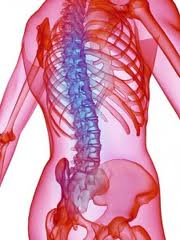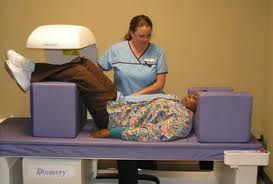 The esophageal cancer risk with bisphosphonate bone drugs may be a bigger problem than thought, particularly with use of alendronate (Fosamax), an adverse event surveillance study suggested. Overall, 128 cases of bisphosphonate-associated esophageal cancer were reported to the FDA's adverse event reporting system (AERS) from 1995 through 2010, Beatrice J. Edwards, MD, of Northwestern University and colleagues found.
The esophageal cancer risk with bisphosphonate bone drugs may be a bigger problem than thought, particularly with use of alendronate (Fosamax), an adverse event surveillance study suggested. Overall, 128 cases of bisphosphonate-associated esophageal cancer were reported to the FDA's adverse event reporting system (AERS) from 1995 through 2010, Beatrice J. Edwards, MD, of Northwestern University and colleagues found.
That risk appeared disproportionate with alendronate, the group reported in an abstract presented at the American Society of Clinical Oncology held in Chicago recently. That particular bisphosphonate accounted for 75% of the esophageal cancers seen with bisphosphonates in the FDA database -- 6.4 times more than with any other drug in the class.
"Our analysis of FDA AERS identifies a larger number of cases of esophageal cancer than previously described, and a significant safety signal with alendronate use," they noted. "Increased awareness and vigilance is needed for patients receiving oral bisphosphonate therapy."
A 2009 FDA analysis had pointed to 23 such cases with alendronate since initial marketing in 1995. At that time no other oral bisphosphonate had any reports of a link to esophageal cancer in the adverse event reporting database, though a handful of cases with risedronate (Actonel), ibandronate (Boniva), and etidronate (Didronel) had been reported in Europe and Japan.
A subsequent British registry study suggested elevated risk with prolonged use of oral bisphosphonates, but an FDA advisory panel cited a lack of solid evidence.
Edwards' group updated the analysis of adverse event reports received by the FDA by searching the AERS database for terms related to esophageal cancer in combination with all drug names for bisphosphonates over the period from 1996 to 2010. The esophageal cancer events they found associated with bisphosphonate use were 96 cases with alendronate, 14 with risedronate, 10 with ibandronate, seven with zoledronic acid, and one with pamidronate (Aredia).
Barrett's esophagus was listed in three of the cases, which led the researchers to recommend avoiding oral bisphosphonates for patients with this risk factor for esophageal cancer and also for those with persistent mucosal abnormalities.
"Esophagitis has been associated with oral bisphosphonates," Edwards' group noted. "Erosive esophagitis and persistent mucosal abnormalities have been noted with crystalline material (similar to ground alendronate)."

 Experts recommend that older women have regular bone density tests to screen for osteoporosis. But it's been unclear how often to repeat the tests. A study of nearly 5,000 women now reports that patients with healthy bone density on their first test might safely wait 15 years before getting rescreened.
Experts recommend that older women have regular bone density tests to screen for osteoporosis. But it's been unclear how often to repeat the tests. A study of nearly 5,000 women now reports that patients with healthy bone density on their first test might safely wait 15 years before getting rescreened.